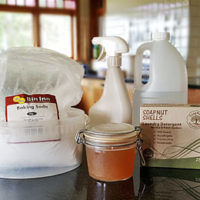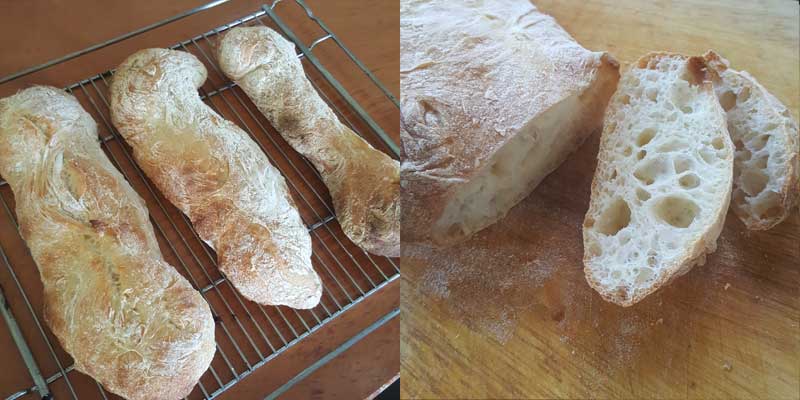
Makes: 3 loaves
Takes: 3 hours mostly resting!
Bake: 15 mins
I have been baking this ciabatta recipe for years. To me, it’s the perfect loaf; chewy yet airy with a good crust and a slightly tangy, sour flavour. It looks and smells like REAL bread. And what’s more, this ciabatta is really, really easy to make.
It’s delicious simply sliced and spread with butter on the day of baking and makes excellent toast the day after (and the day after that). Bruschetta is a bit of a favourite in this house and if you bake thin slices of this ciabatta with a little olive oil until crisp, you have the perfect base for the toppings of your choice!! Check out our blog post which shows you how to make your own ricotta cheese which makes a great topping for this bread!!
But first…. you will need a stand mixer for this ciabatta recipe. And the sturdier the better as it gets a bit of a work out. A silicone scraper is also very handy!!
Ingredients
500g Bread Flour
2 tsp yeast (the little granules usually labelled Active Dried Yeast)
15g Salt
475ml lukewarm/hand hot tap water
Method
1. Measure and Mix
Measure your flour, yeast and salt into the bowl of your mixer. Pour the water on top and with the paddle attachment (beater) briefly mix the ingredients together until well combined. Leave it to sit for 10-15 minutes.
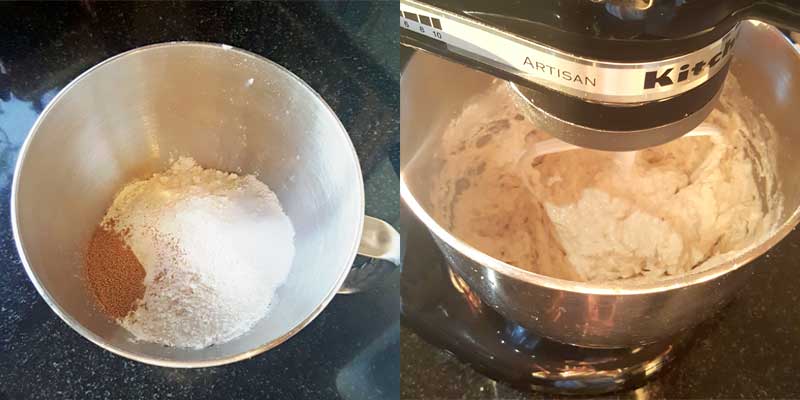
Now put your mixer to work and on a high speed, beat the dough. It will look very sloppy but don’t worry, this is good!! Do not take your eye off it and it’s a good idea to supervise your mixer too so it doesn’t jiggle itself onto the floor….. The dough will gradually come together and start to rise up the paddle. This happens very quickly and when it does, you need to stop and swap out the paddle for the dough hook. If you take your eye off it and the dough rises, it will creep into the machinery of your mixer which is not good….!! I usually have to beat the dough for around five minutes to get to this stage.
Once your dough hook is attached, beat again on a high speed. You will hear the dough start to slap on the side of the bowl. Always supervise your machine. Continue to beat until the sides of the bowl become clean and the dough is barely touching the bottom of the bowl. This usually takes a further 5 minutes.
Once your bowl is clean, lift your hook out and you should have a shiny, smooth and sticky dough. It will be very loose and will pool out to the sides of the bowl once you’ve eased it off the hook. Don’t worry – this is perfect.
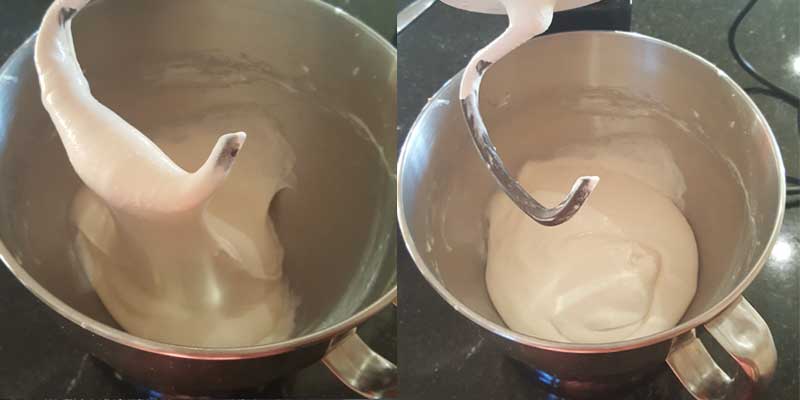
2. Leave Ciabatta Dough to Rise
Now, cover your bowl (I use a beeswax wrap) and leave your dough to rise. You need it to rise to the top of the bowl!! I have a sunny spot and it rises here in only 1-2 hours. If it’s a cool spot, it will take much longer. I used to make this dough with cold water and at room temperature this rise could take up to 4 hours. Using warm water and a warm spot speeds up the process a lot which works for me and I don’t think it compromises the taste or texture of the bread, so I’m all for it!!
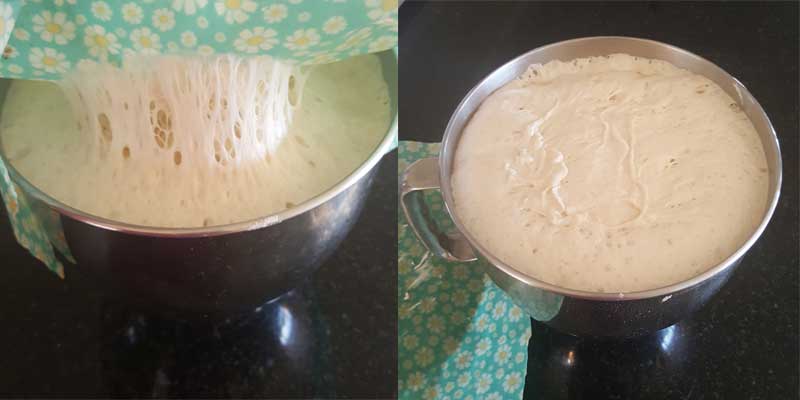
When your dough has risen to the top of the bowl, it will be wobbly, runny and FULL of bubbles!! Flour your bench well and using a floured silicone scraper or your hands, scrape the dough gently onto the bench. Try to keep those bubbles intact which will give your loaf those characteristic ciabatta holes!!
3. Divide and Prove
Now split your pile of dough into 2 or 3 using a gentle slicing motion with your spatula and separate the portions. Don’t worry about the shape at this stage. I make 3 loaves from this ciabatta recipe which I think is ideal, but you could try making 2 bigger loaves or even rolls.
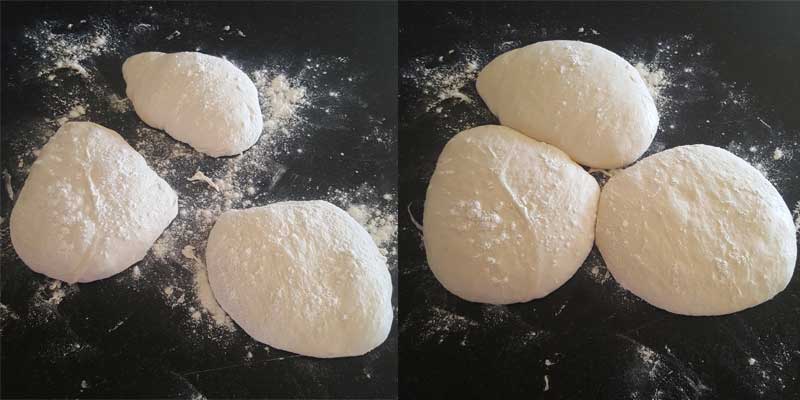
Leave your dough piles on the bench to prove for 45 minutes.
Remove the shelves from your oven and pre-heat it to 260° (fan forced). Line your shelves with baking paper or silicone sheets.
After 45 minutes, your dough piles will have puffed up slightly. Take your floured spatula and gently ease the piles away from the bench dusting with more flour if necessary. You need them to be ‘unstuck’ so you can lift them off easily.
4. Flip and Stretch
Now, with well floured hands, lift each pile gently. As you lift, turn it over and as you lay it (upside down) on your lined shelf, stretch it out to make your final loaf shape. This is all one gentle, swift movement and sounds more complicated than it is!! Once your loaf has been transferred to your shelf, it should have that rustic, striated look. I cook 2 loaves per shelf so I use 2 shelves for 3 loaves.
They probably won’t be uniform in look or size and that’s perfectly fine. They are homemade after all and in my opinion, that’s how good handmade bread should look!!
5. Bake you Ciabatta Loaves
Now bake your ciabatta loaves for 15-18 minutes. If you’ve got 2 shelves, you might want to rotate and swap your high shelf with your low shelf halfway through the cooking time, but this depends on how well your oven performs.
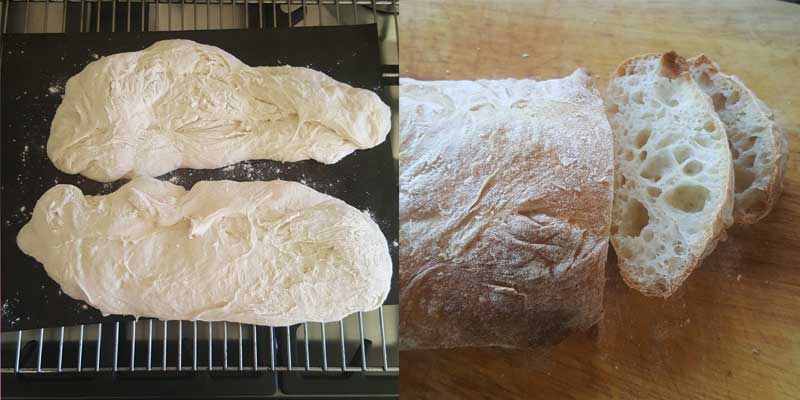
To check if your loaves are cooked, lift and tap the underside. It should be firm, look crusty and sound hollow.
When your ciabatta loaves are done, take them out of the oven and ease them off the paper. Leave them to cool on the shelves and……… enjoy!!!
I’d love to hear what you think of this ciabatta recipe. Did you try it and if so how did you get on…?? Post your pics and comments to our Facebook page – let’s see some ciabatta loaves!!


